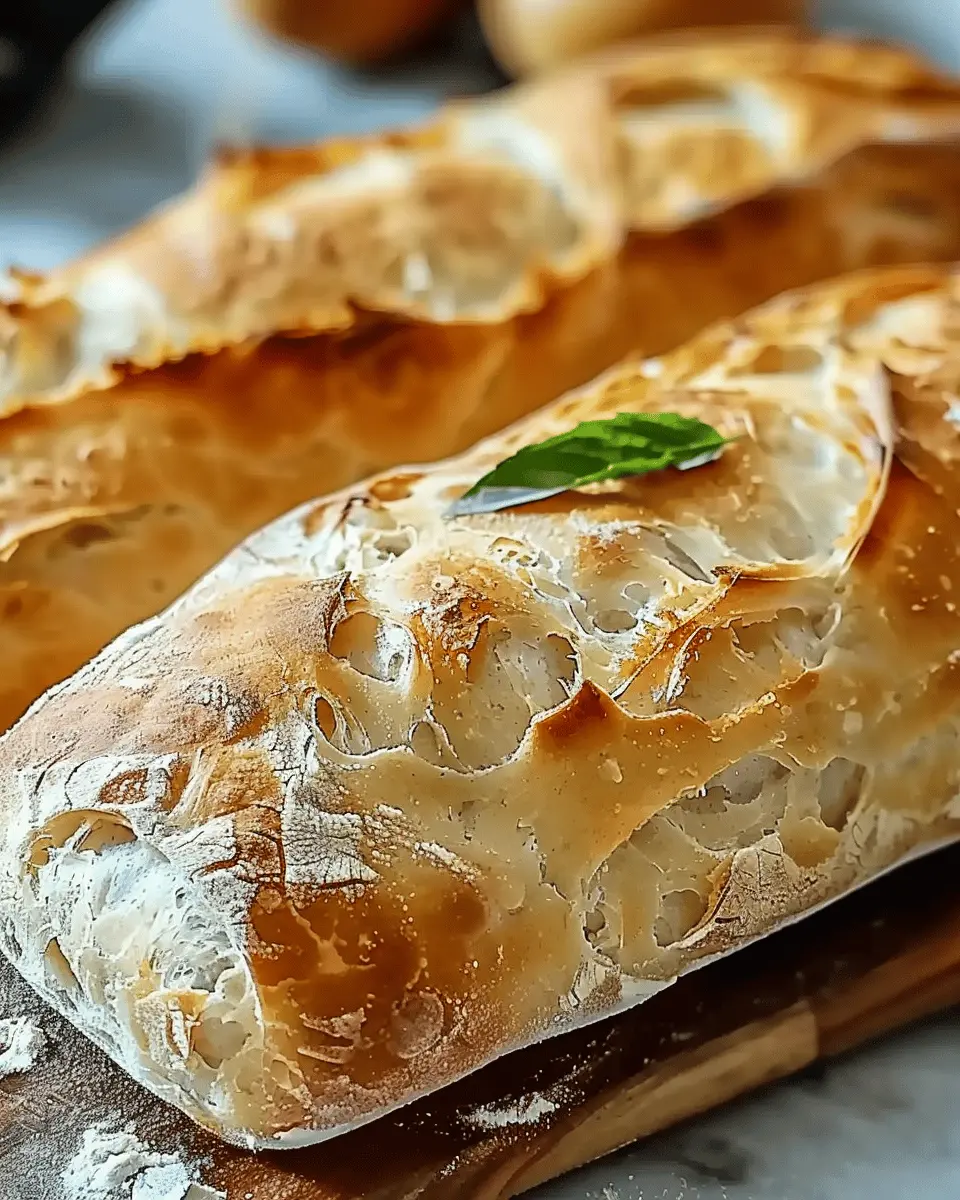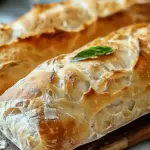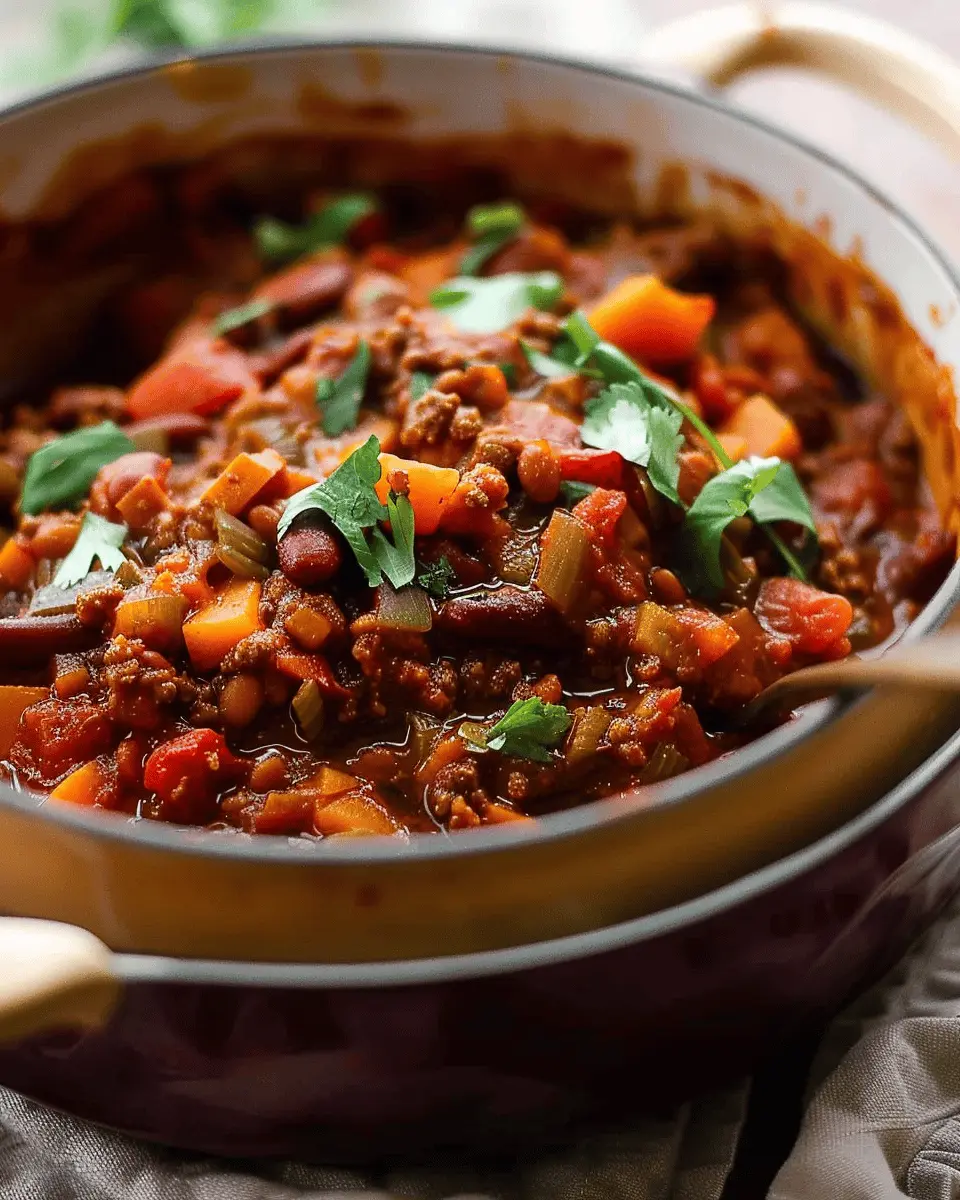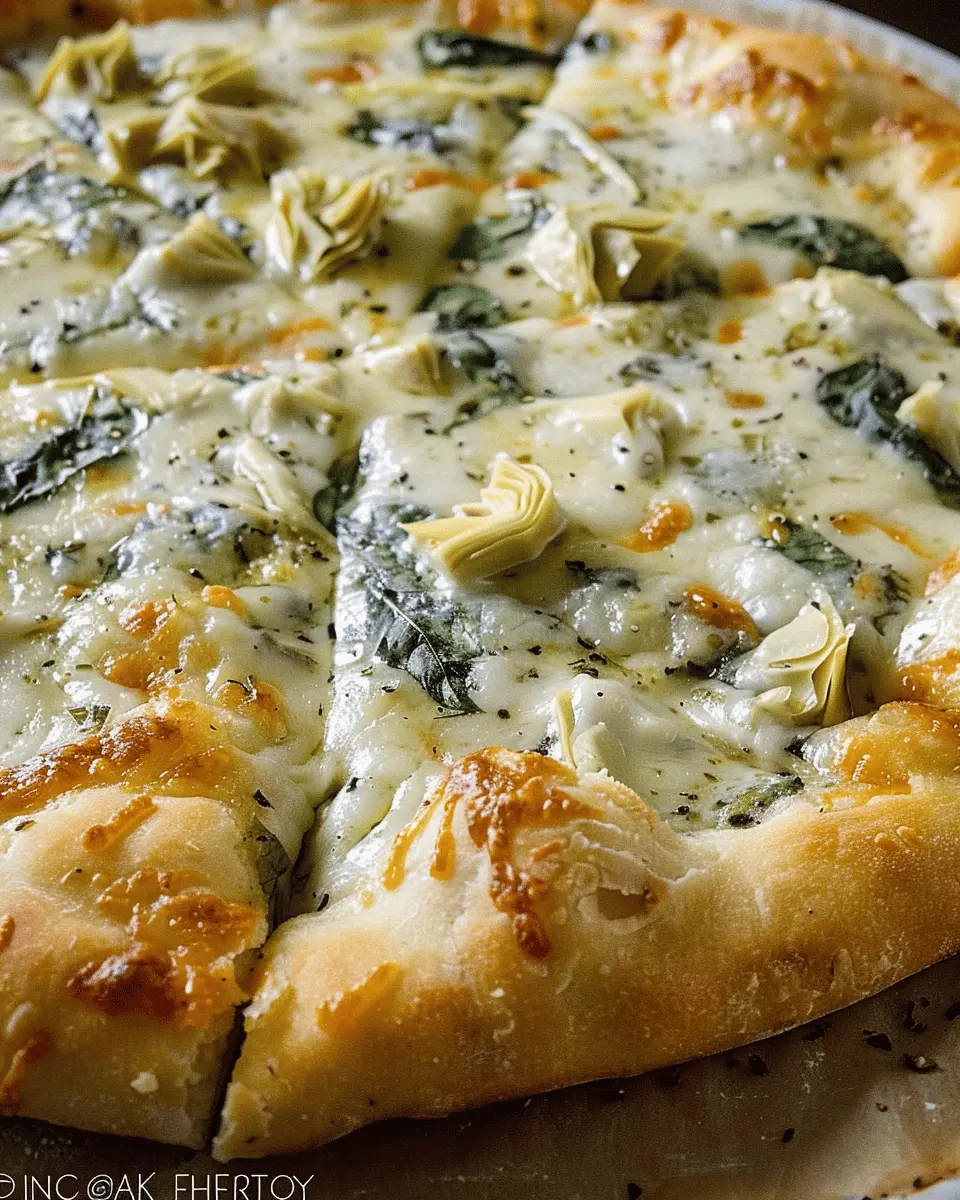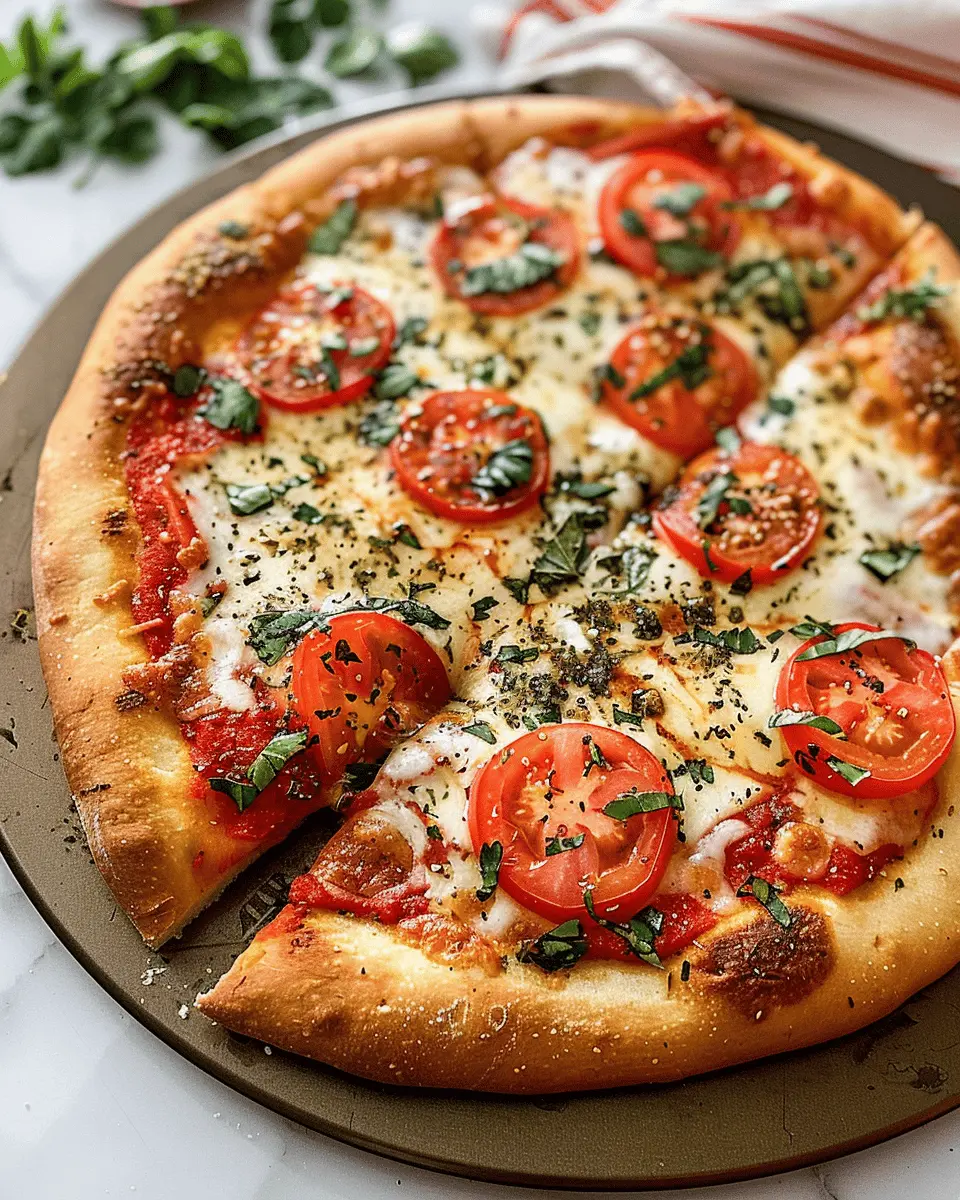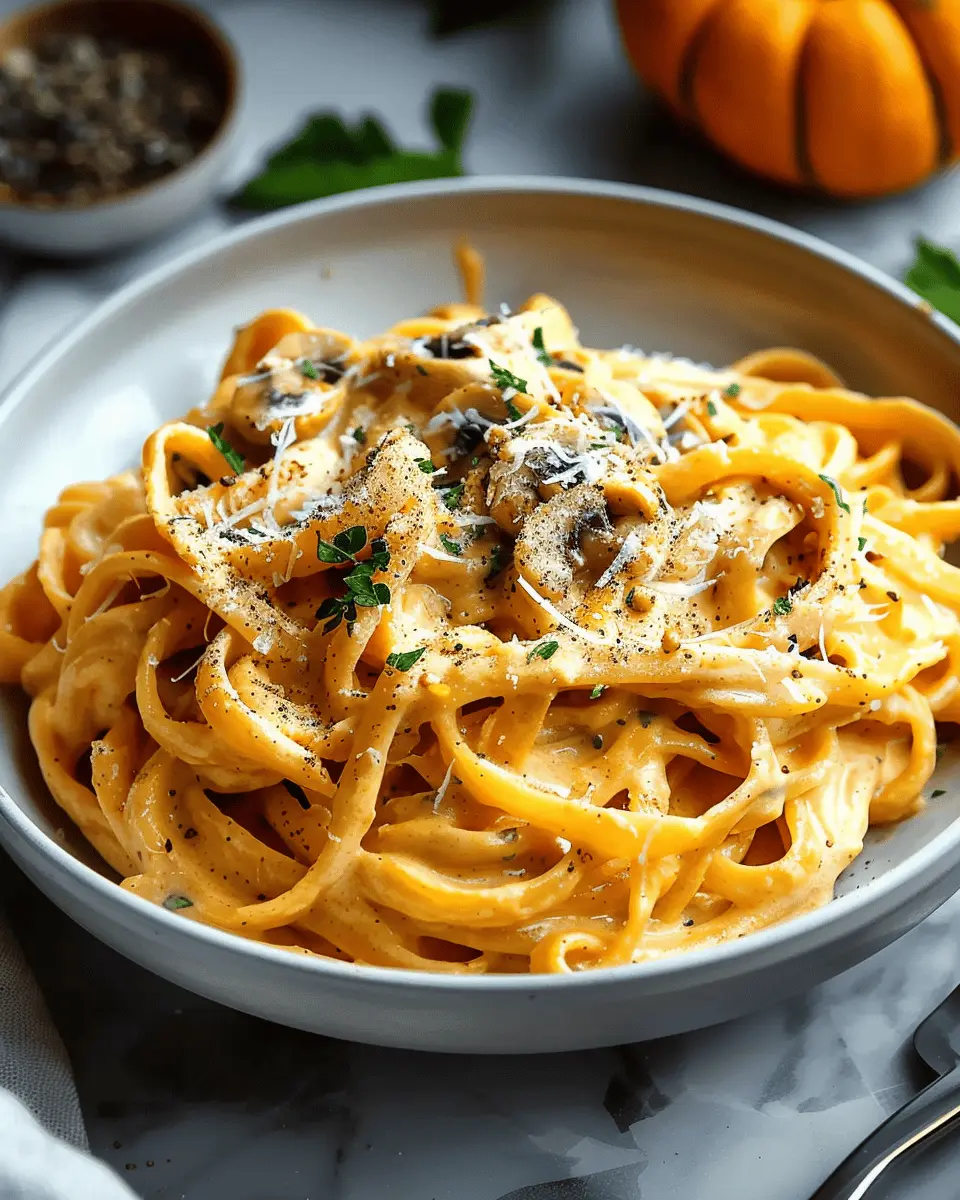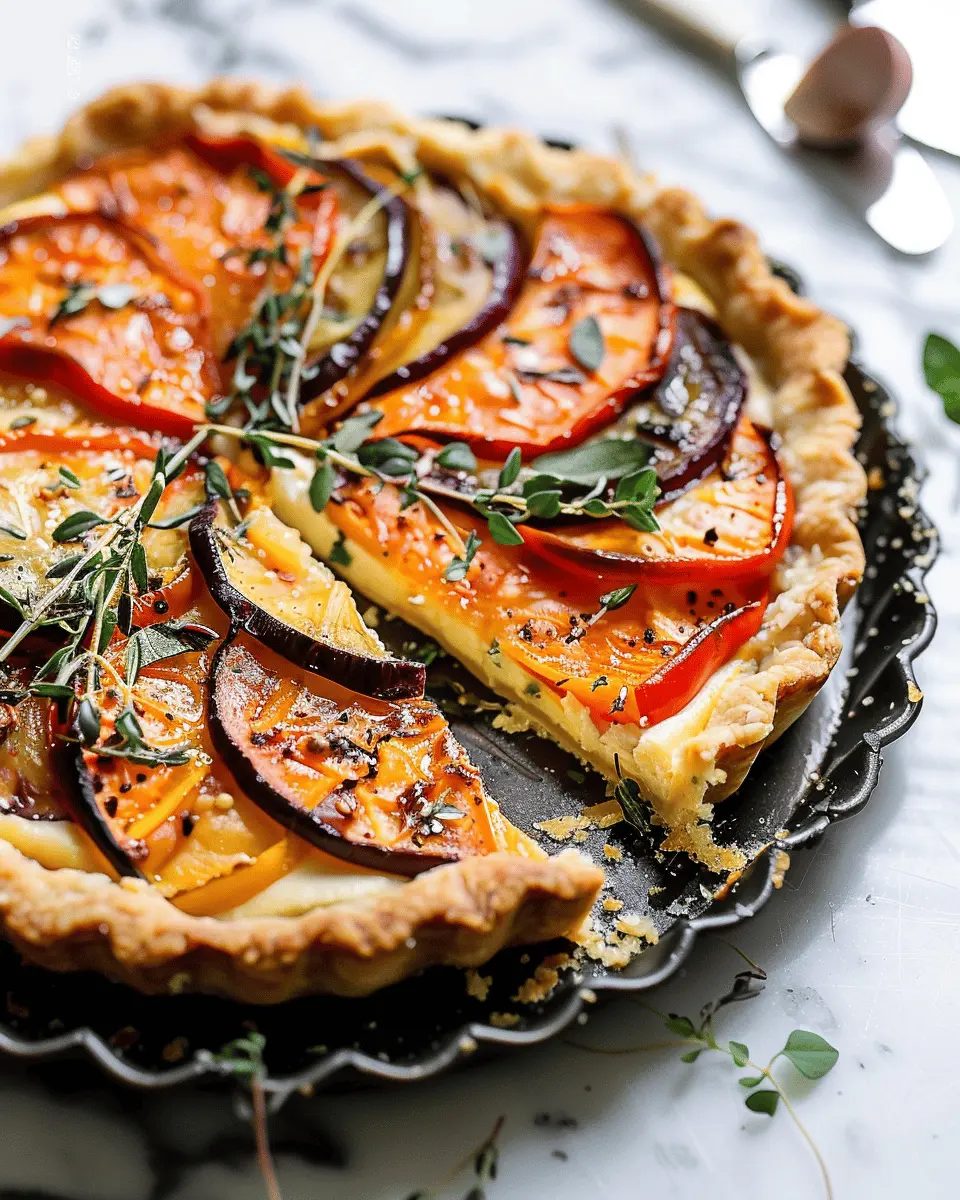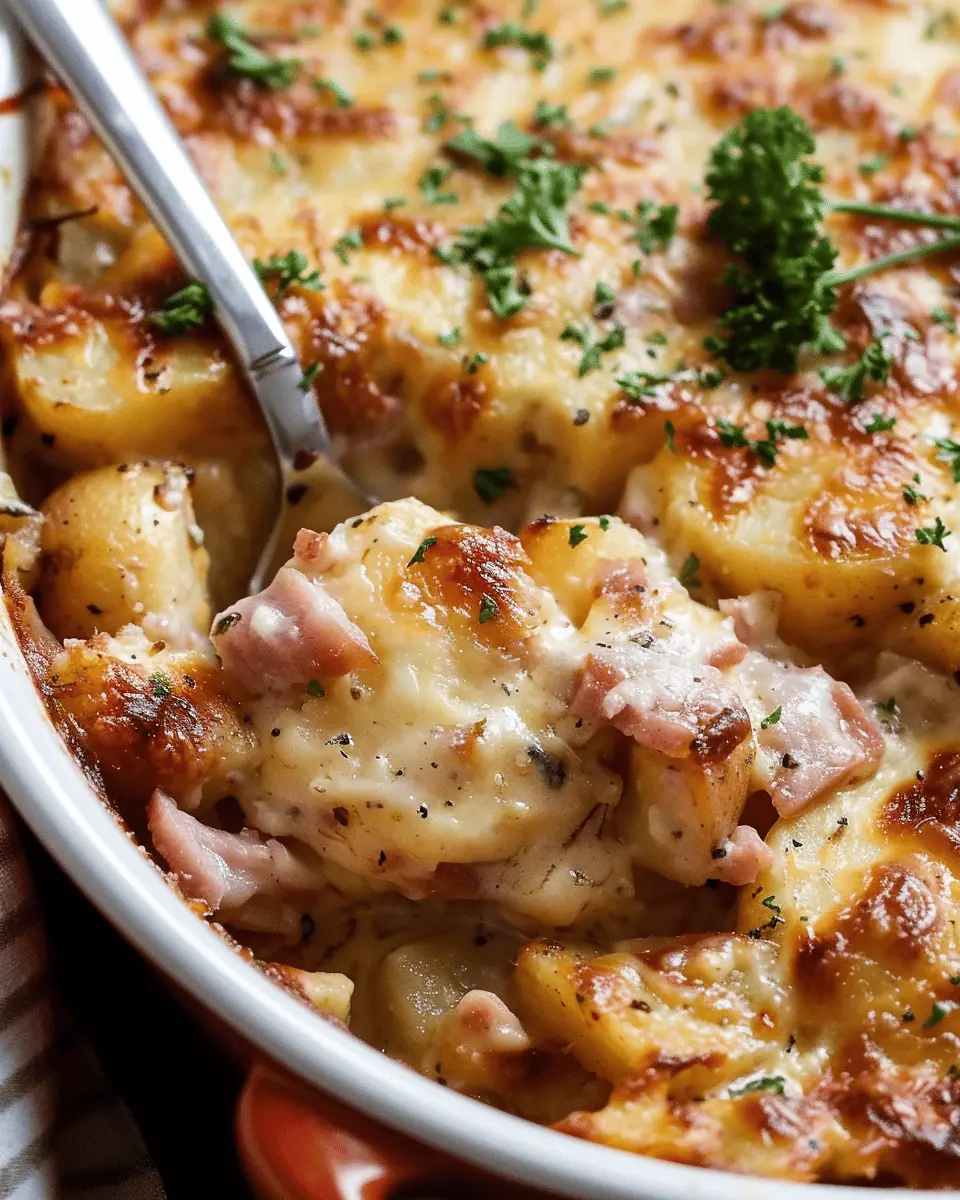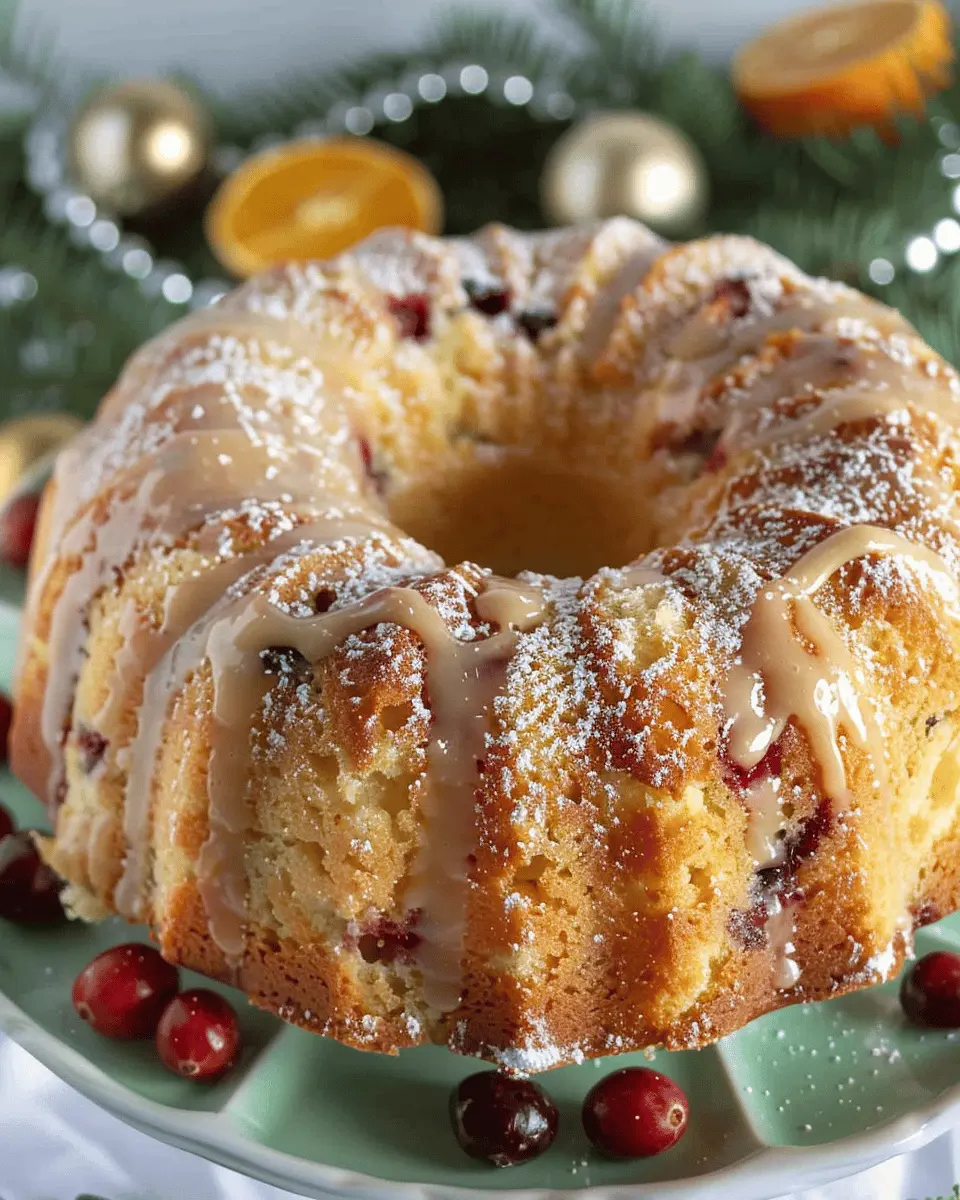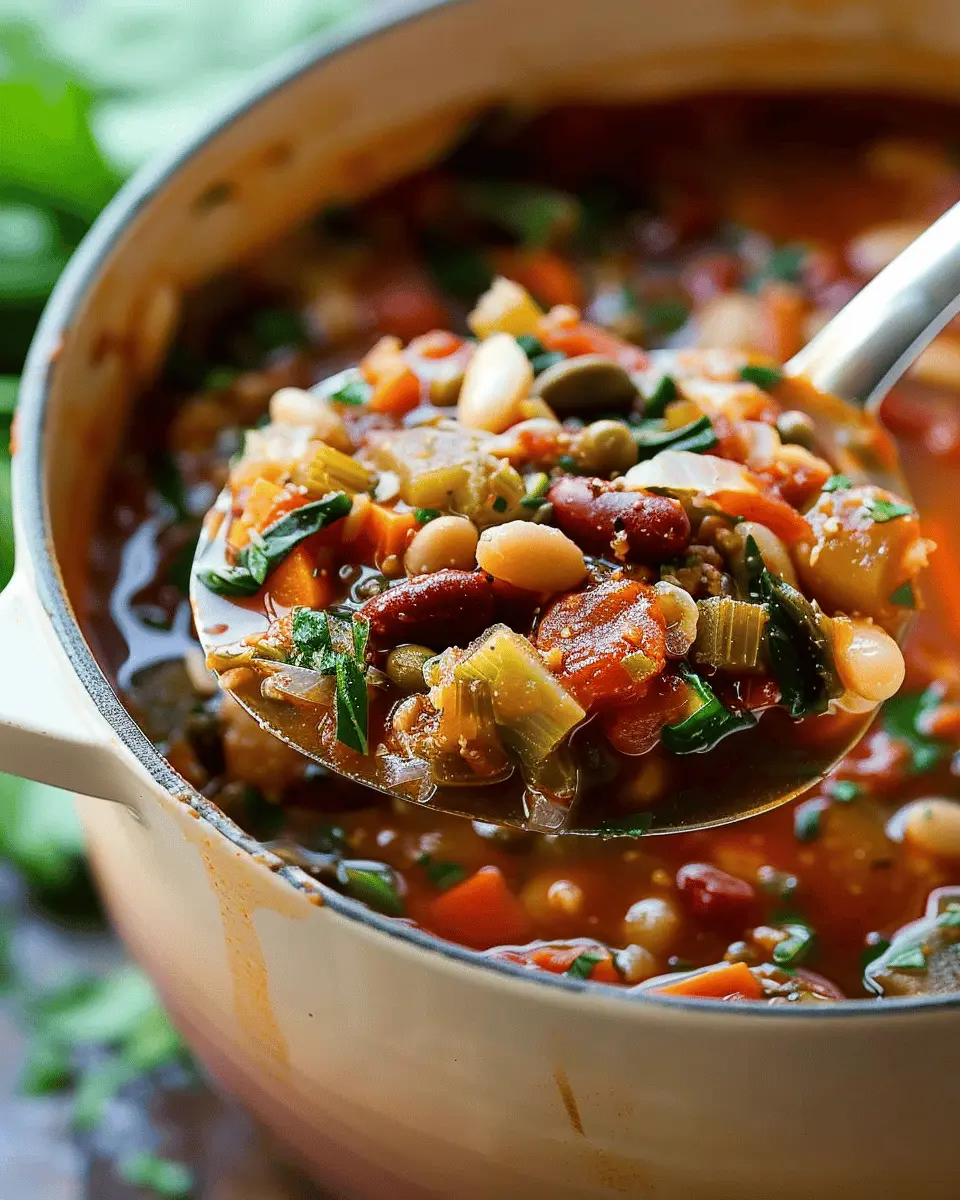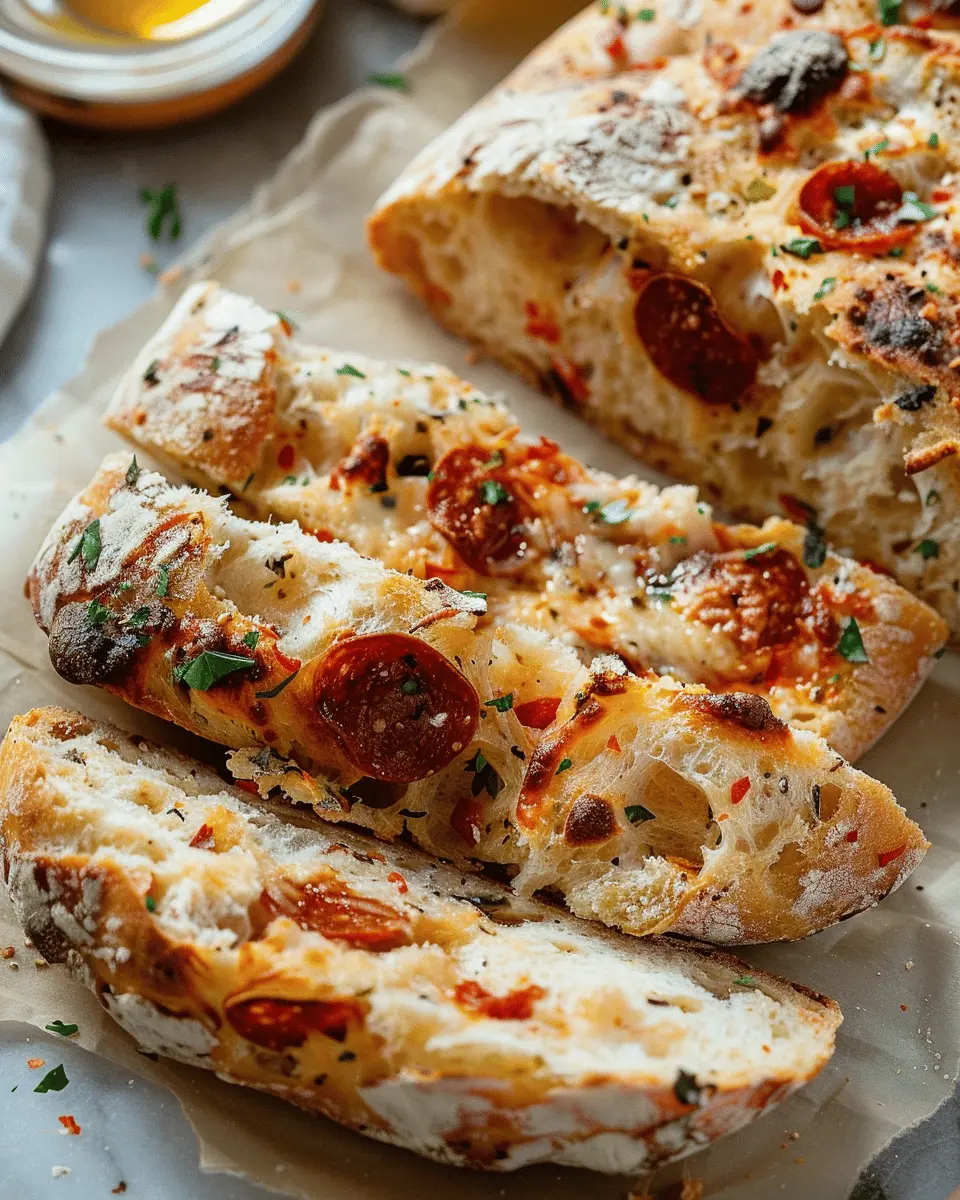Introduction to Crusty Italian Bread
The Joy of Homemade Bread
There’s something truly magical about the aroma of fresh bread wafting through your kitchen. Homemade bread is more than just a culinary activity; it’s a delightful experience that speaks to the heart of Italian cooking. Making your own crusty Italian bread invites you into a world of flavors and textures that store-bought options just can’t replicate. Have you ever wondered how a simple mixture of flour, water, yeast, and salt can create a crusty, golden loaf that brings everyone to the table?
Let’s explore the joys of making this quintessential Italian staple. First, the ingredients are simple, yet, when combined, they transform into something spectacular. According to a USDA report, baking your own bread can also save you money while allowing you to control quality and source your ingredients for a healthier option.
The process of making crusty Italian bread is both soothing and rewarding. Kneading the dough feels like a workout for your hands, a practice that many find therapeutic. As it rises, it’s a moment to pause, maybe enjoy a cup of coffee, and think about those who will share in this delicious creation.
What’s even better? The secret to a perfect crust often lies in using a baking stone or a preheated Dutch oven that mimics commercial bread ovens. This is just one of the tips and tricks that can elevate your bread-making game. Not only does it create that irresistible crust, but it also maintains moisture, delivering a loaf that’s crusty on the outside and soft on the inside.
If you’ve been thinking about giving bread-making a shot, consider this your nudge to dive in! Check out resources like King Arthur Baking for insightful guides on sourdough and basic bread-making techniques. And who knows? You might just find yourself hooked on the art of creating your crusty Italian bread. Embrace the journey, and watch as your baking skills rise—just like the dough!
So, are you ready to roll up your sleeves and start your baking adventure? Let’s get to the heart of this recipe and create something extraordinary together!
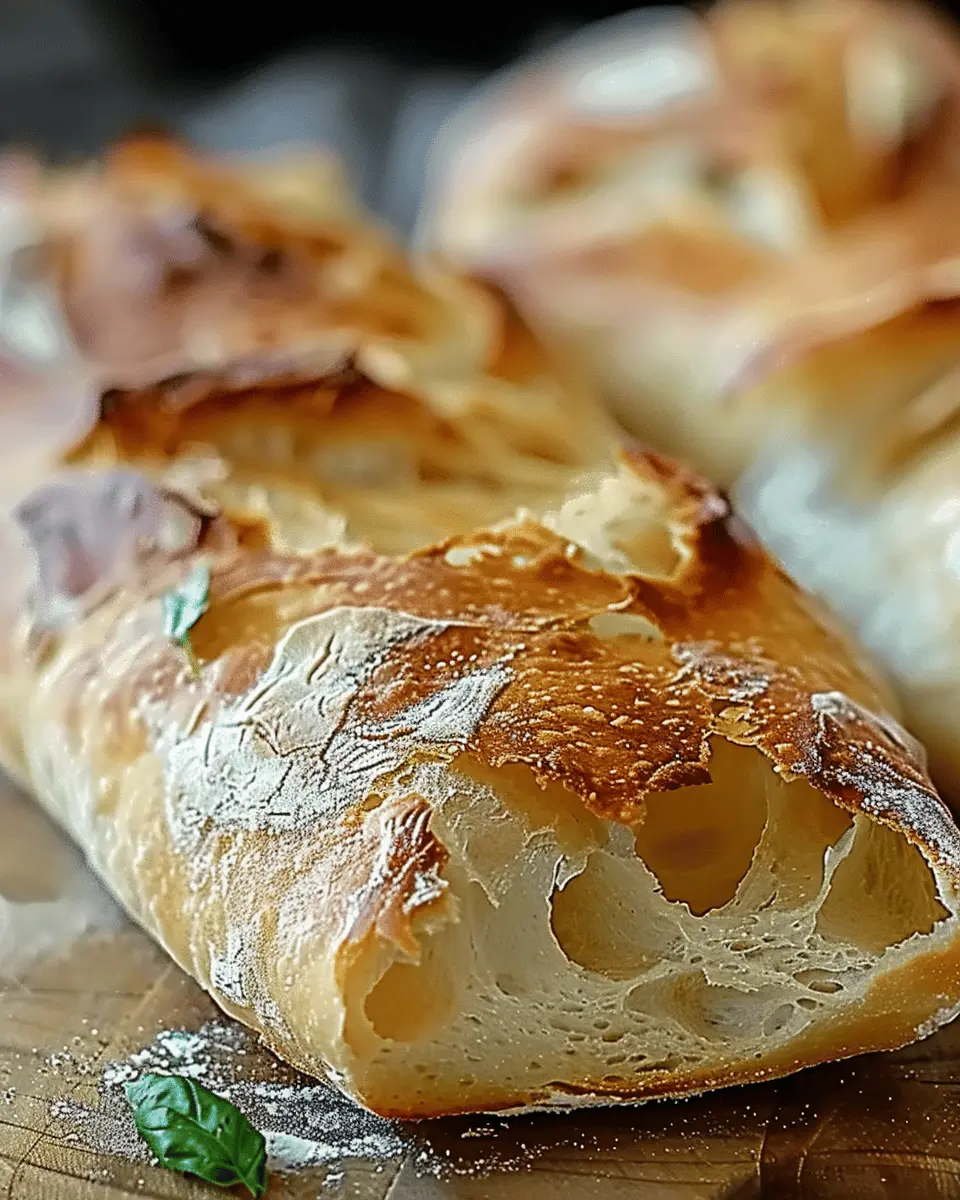
Ingredients for Crusty Italian Bread
Essential Ingredients for the Perfect Loaf
Baking a beautiful loaf of crusty Italian bread at home may seem daunting, but with the right ingredients, you’ll be well on your way to enjoying that crispy exterior and soft, airy interior. Here’s what you’ll need:
-
All-Purpose Flour: The backbone of your bread, choose high-quality flour for the best structure. A blend with some bread flour can enhance the texture.
-
Water: Use lukewarm water to activate the yeast effectively. Aim for about 110°F (43°C) to create an ideal environment for fermentation.
-
Salt: This isn’t just for flavor; salt helps strengthen the dough’s gluten structure. Sea salt or kosher salt will work beautifully.
-
Yeast: Active dry yeast or instant yeast are both great options. Yeast is crucial for that airy, chewy texture we crave in crusty Italian bread.
-
Olive Oil: A splash of good-quality olive oil adds flavor and helps create a more tender crumb.
For tips on perfecting your ratios and exploring additional flavors, check out resources like King Arthur Baking or Serious Eats. These sites are fantastic for novice bakers and seasoned pros alike!
Preparing Crusty Italian Bread
Nothing quite captures the essence of homemade comfort food like a fresh-baked loaf of crusty Italian bread. The aroma wafting through your kitchen can evoke memories of warm family meals and cozy gatherings. Let’s dive into the simple yet rewarding steps of preparing this delightful bread from scratch. Whether you’re a seasoned baker or just getting started, you’re in for a treat!
Activate the Yeast
The first crucial step in making crusty Italian bread is activating your yeast. Start by combining 1 packet (2¼ teaspoons) of active dry yeast with 1 cup of warm water (about 110°F or 43°C) and a pinch of sugar in a large bowl. Allow this mixture to sit for 5-10 minutes until it becomes frothy. This bubbling action is essential as it indicates that the yeast is alive and ready to do its magical work. Not sure if your yeast is active? You can learn more about yeast activation from King Arthur Baking for expert tips.
Mix the Dough
Once your yeast is activated, it’s time to mix the dough. In the same bowl, add 3 cups of bread flour, 1 teaspoon of salt, and 1 tablespoon of olive oil. Use a wooden spoon or a dough whisk to combine the ingredients until they form a shaggy dough. At this point, it’s okay if the mixture looks a bit messy; that’s perfectly normal!
Knead Until Smooth
Next, transfer your dough onto a lightly floured surface. Knead it by hand for about 8-10 minutes. You want the dough to become smooth and elastic. While this process may require some muscle, it’s also quite therapeutic, allowing you to focus only on your creation. You’ll know it’s ready when the dough springs back when poked!
First Rise
After kneading, place the dough in a lightly greased bowl. Cover it with a damp kitchen towel or plastic wrap and let it rise in a warm, draft-free spot for about 1 to 1½ hours, or until it’s doubled in size. This phase is just as crucial as the kneading, as it helps develop the bread’s texture and flavor. If you’re looking for tips on the best spots to let dough rise, check out this guide from The Kitchn.
Preheat and Shape
Ready for the next step? Preheat your oven to 450°F (232°C). Once your dough has risen, gently punch it down to release any air bubbles. Shape it into a round or oval loaf, depending on your preference. It should feel smooth and uniform. Transfer it to a baking sheet lined with parchment paper.
Second Rise
Cover the shaped dough again, allowing it to rise once more for about 30 minutes. This second rise helps further develop the crusty Italian bread’s structure. While you wait, you can daydream about the amazing dishes you’ll serve alongside your bread!
Score the Loaf
Before baking, take a sharp knife or a bread lame to score the top of the loaf. This not only looks beautiful but also allows the bread to expand properly in the oven. A few shallow slashes in the shape of a cross or even a simple line should do the trick—let your creativity flow!
Bake to Perfection
Now for the moment of truth! Place your bread in the preheated oven and bake for 25-30 minutes, or until the crust is golden brown and sounds hollow when tapped on the bottom. To achieve that extra crunch, you can add a pan of water to the bottom of the oven for steam—this mimics the effect of a professional bread oven.
Once baked, remove your crusty Italian bread and let it cool on a wire rack. The irresistible aroma might be too tantalizing though—enjoy a warm slice right away with some olive oil or your favorite spread!
Baking crusty Italian bread might seem daunting, but with a little patience and practice, it will become a beloved staple in your home. Are you ready to make waves in your kitchen with this classic recipe?
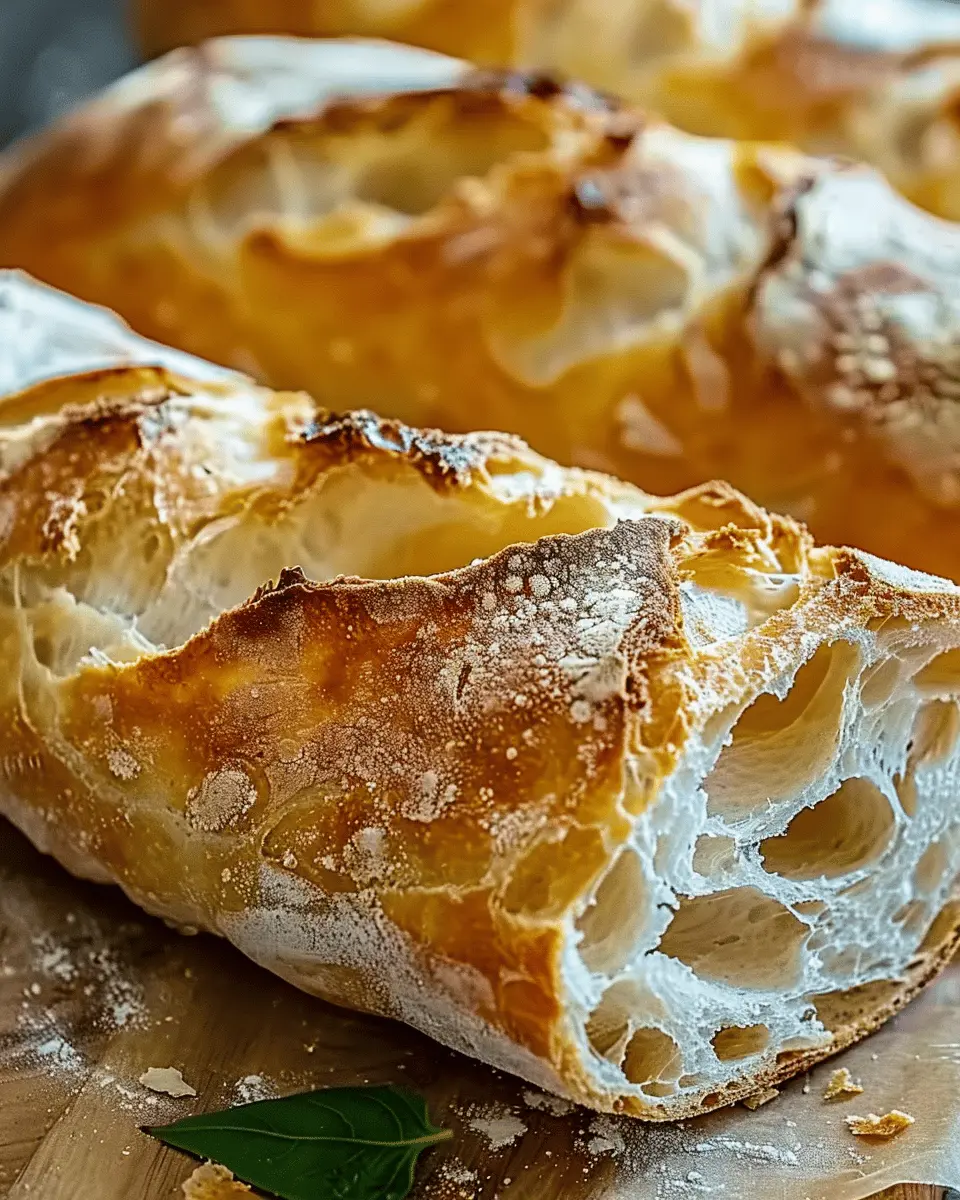
Variations on Crusty Italian Bread
Herb-Infused Crusty Bread
If you’re looking to elevate your crusty Italian bread, one delightful variation is to infuse it with herbs. Imagine biting into a slice that bursts with the flavors of rosemary, thyme, and oregano! Adding these fresh herbs not only enhances the aroma but also gives your bread a unique twist. Simply mix chopped herbs into your dough during the kneading process or sprinkle them on the top before baking for an aromatic finish. This is also a great way to use up any herbs that might be lingering in your fridge.
For a more robust flavor, consider pairing it with a homemade herb butter. Infusing butter with garlic, parsley, and perhaps a hint of lemon zest can make your bread experience even more divine. If you’re unsure where to start, check out this herb butter recipe.
Olive and Garlic Crusty Bread
Another mouthwatering option is Olive and Garlic Crusty Bread. Just the thought of savory olives and roasted garlic melded into warm, crusty bread is enough to make anyone hungry. To incorporate this, simply chop up some green or black olives, and add roasted garlic cloves into your dough as you emulsify the ingredients together.
This variation not only adds bursts of flavor but also pairs excellently with pasta dishes or Mediterranean spreads. Picture serving this bread alongside a refreshing olive tapenade for a perfect appetizer! For added inspiration, consider exploring flavorful spreads such as this classic tapenade to complement your new bread adventure.
Whether you choose to go with herb-infused bread or the irresistible olive and garlic combo, these variations will surely impress your dinner guests and make every meal a celebration. Happy baking!
Baking Notes for Crusty Italian Bread
Tips for Achieving the Perfect Crust
Creating a delicious loaf of crusty Italian bread isn’t just about the ingredients; it’s also about the technique. Here are some tips to ensure your bread comes out with a perfect crust every time:
-
Steam is Your Friend: Introducing steam during the first few minutes of baking is essential. Pouring hot water into a tray or using a steam-injected oven can help develop that desirable crusty exterior.
-
Use the Right Flour: Opt for high-protein flour, such as bread flour or “00” flour. This will give your dough structure and enhance the crust’s texture.
-
Temperature Matters: Bake at a high temperature (around 450°F or 232°C) to encourage crust formation. Preheat your oven with a baking stone, if available, for even better results.
-
Allow Cooling Time: Once baked, let your bread cool completely on a wire rack. This prevents moisture buildup underneath, preserving that crisp crust.
For more tips and techniques, consider visiting King Arthur Baking or The Kitchn. These resources offer extensive insights into mastering artisanal bread-making. Enjoy your baking adventure!
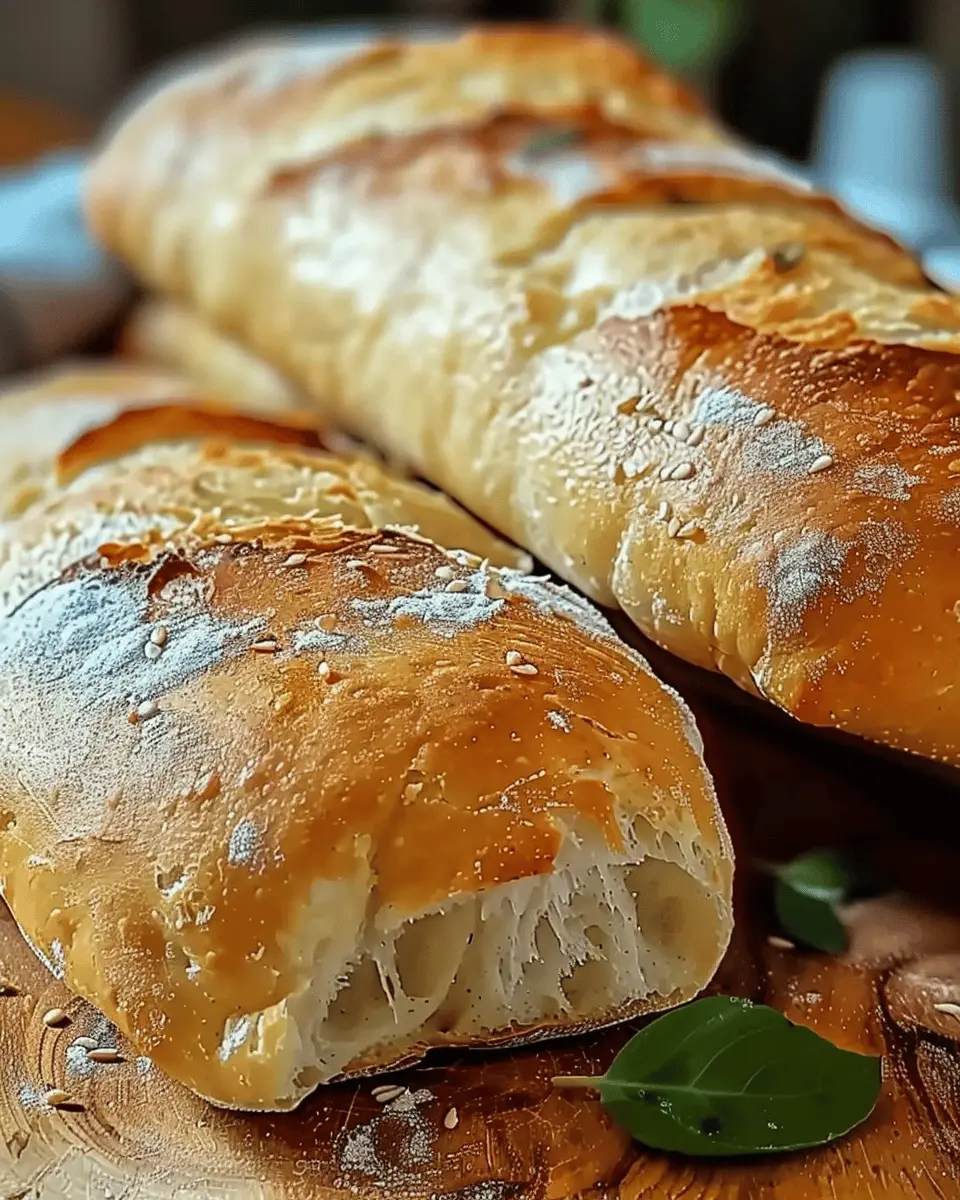
Serving Suggestions for Crusty Italian Bread
Perfect Pairings for Your Freshly Baked Bread
When you’ve just pulled a loaf of crusty Italian bread from the oven, the opportunities for enjoyment are endless! Let’s explore how to elevate this delicious staple with simple and delightful pairings.
- Classic Bruschetta: Top slices of your bread with fresh tomatoes, basil, and a drizzle of balsamic glaze for a refreshing appetizer or snack.
- Savory Sandwiches: Use your crusty Italian bread to create fantastic sandwiches. Try layering turkey bacon, chicken ham, or even grilled vegetables. The crusty exterior holds up well against any filling!
- Cheese and Charcuterie Board: Pair your bread with a selection of cheeses like aged Parmesan or creamy mozzarella alongside cured meats. This combination never fails at gatherings.
- Dipping Delight: Serve slices alongside a bowl of olive oil mixed with balsamic vinegar, garlic, and herbs for a side dish that everyone will rave about.
Feeling adventurous? Check out this guide on the best cheese pairings for even more ideas to complement your crusty Italian bread! Whether it’s a gathering or a quiet evening at home, the combination possibilities are delightful.
Invaluable Tips for Mastering Crusty Italian Bread
Common Mistakes to Avoid
Making crusty Italian bread can be incredibly rewarding, but there are some common pitfalls to dodge. First, while it might be tempting to rush the dough, patience is key. A longer fermentation time enhances flavor and texture—sometimes overnight is best!
Another mistake is underestimating the importance of steam in your baking. A hot oven with steam helps create that breathtaking crunchy crust. To achieve this at home, consider adding a pan of water in the oven or misting the dough with water before baking.
Lastly, don’t skip the flour dusting! Using flour on your work surface and your dough helps prevent sticking but also adds to the rustic look of your bread.
Enhancing Flavor and Texture
Enhancing the flavor of your crusty Italian bread can be as simple as incorporating a little bit of olive oil or using high-quality sea salt. Not only does this boost the taste, but it also creates a moist interior.
Experimenting with different flours can also elevate your bread. For instance, adding a bit of whole wheat or semolina flour can enhance the texture.
If you’re interested in diving deeper into the world of bread-making, check out resources like King Arthur Baking or Bread Alone, where expert tips can guide your journey to the perfect loaf. Happy baking!
Time Details for Crusty Italian Bread
Preparation Time
Making crusty Italian bread is an enjoyable process that takes about 15 minutes of hands-on preparation. Gather your ingredients — flour, yeast, salt, and water — and mix them to create a satisfying dough. While it might seem simple, the magic happens during the rising stages.
Baking Time
After allowing the dough to rise, you’ll be baking for about 30-35 minutes. This step is crucial for achieving that perfect golden crust and soft interior.
Total Time
In total, you can expect about 4 hours from start to finish when you include rising times. But don’t worry! Most of that is hands-off, giving you plenty of time to indulge in other activities while your delicious crusty Italian bread is being crafted.
For more tips on perfecting your bread, check out resources like King Arthur Baking or The Bread Lab. Is there a part of the process you find most rewarding?
Nutritional Information for Crusty Italian Bread
When indulging in crusty Italian bread, it’s good to know exactly what you’re savoring. Here’s a quick breakdown of the nutritional information you can expect per average slice:
Calories
One slice of homemade crusty Italian bread typically contains about 80-100 calories. This makes it a great choice for those mindful of their caloric intake while still enjoying a delicious treat.
Carbohydrates
Each slice offers around 15-20 grams of carbohydrates. This serves as a lovely energy source, especially when paired with healthy toppings like avocado or turkey bacon.
Protein
You’ll find about 2-3 grams of protein per slice. While bread isn’t a major protein source, combining it with sources like chicken ham or turkey bacon can make it a more balanced meal.
Sodium
With roughly 200-300 mg of sodium, it’s wise to enjoy crusty Italian bread in moderation, especially if you’re watching your salt intake. Pairing it with fresh salads can help keep the dish light and flavorful.
Understanding the nutritional content can enhance your enjoyment of homemade crusty Italian bread. For more insights on bread nutrition, check out the USDA FoodData Central for detailed analyses. Happy baking!
FAQs about Crusty Italian Bread
How can I store crusty Italian bread?
To keep your delicious crusty Italian bread at its best, it’s important to store it correctly. Ideally, let it cool completely after baking, then wrap it in a clean kitchen towel. This allows the bread to breathe without getting too soft. Avoid plastic bags, as they trap moisture and can make your bread lose that satisfying crunch. For longer storage, you can freeze the bread. Just slice it beforehand, wrap it tightly in plastic wrap, and place it in an airtight container.
What’s the best way to reheat crusty bread?
Reheating your crusty Italian bread can be quick and simple. Preheat your oven to 375°F (190°C). Place the bread directly on the oven rack for about 5-10 minutes, until it’s warmed through and the crust regains its crunchiness. If the bread is wrapped, you can also simply remove it from the wrapping and pop it into the oven—no need to cool it first!
Can I use whole wheat flour for crusty Italian bread?
Absolutely! While traditional crusty Italian bread is often made with all-purpose or bread flour, using whole wheat flour can add a nuttier flavor and additional fiber. Expect the texture to be denser, but don’t hesitate to mix whole wheat flour with white flour for a balanced approach.
Why is my bread not crispy?
If your crusty Italian bread isn’t turning out crispy, several factors could be at play. Make sure you’re using enough steam in the baking process; placing a pan of water in the oven can work wonders. Also, check your baking time—a few extra minutes can make all the difference!
For more tips and tricks, you might find articles from King Arthur Baking and The Kitchn helpful! They offer great insights and recipes to elevate your bread-making game.
Conclusion on Crusty Italian Bread
The Satisfaction of Baking Your Own Bread
Baking your own crusty Italian bread can be one of the most fulfilling experiences. There’s something magical about transforming simple ingredients like flour, water, and yeast into a golden, crusty loaf. The aroma wafting through your kitchen will have you feeling accomplished before you even take your first bite!
Home-baked bread is not just delicious; it’s a wonderful way to connect with the traditions of Italian cuisine. Whether enjoyed with a rich bowl of soup or simply dipped in olive oil, the versatility of crusty Italian bread elevates any meal. Plus, think about sharing this warm creation with friends! Isn’t it amazing how food can bring people together? For tips on enhancing your bread-making skills, check out experts like the King Arthur Baking Company for more inspiration. Remember, every loaf is a step towards mastering this age-old craft!
PrintCrusty Italian Bread: The Easy Way to Bake Perfect Loaves at Home
- Prep Time: 20 minutes
- Cook Time: 30 minutes
- Total Time: 1 hour 50 minutes
- Yield: 1 loaf 1x
- Category: Bread
- Method: Baking
- Cuisine: Italian
- Diet: Vegetarian
Ingredients
- 4 cups all-purpose flour
- 1 1/2 cups warm water
- 2 teaspoons salt
- 1 teaspoon sugar
- 2 teaspoons active dry yeast
Instructions
- In a large bowl, mix warm water, sugar, and yeast. Let sit until frothy.
- Add flour and salt, mixing until a dough forms.
- Knead the dough for about 10 minutes.
- Place in a greased bowl, cover, and let rise for 1 hour.
- Punch down the dough and shape into a loaf.
- Let rise again for 30 minutes.
- Preheat oven to 450°F (232°C).
- Bake for 30 minutes or until golden brown.
- Cool on a wire rack before slicing.
Notes
- For a crispier crust, place a pan of water in the oven while baking.
Nutrition
- Serving Size: 1 slice
- Calories: 120
- Sugar: 0.5g
- Sodium: 200mg
- Fat: 1g
- Saturated Fat: 0g
- Unsaturated Fat: 0g
- Trans Fat: 0g
- Carbohydrates: 24g
- Fiber: 1g
- Protein: 4g
- Cholesterol: 0mg
Keywords: Crusty Italian Bread
